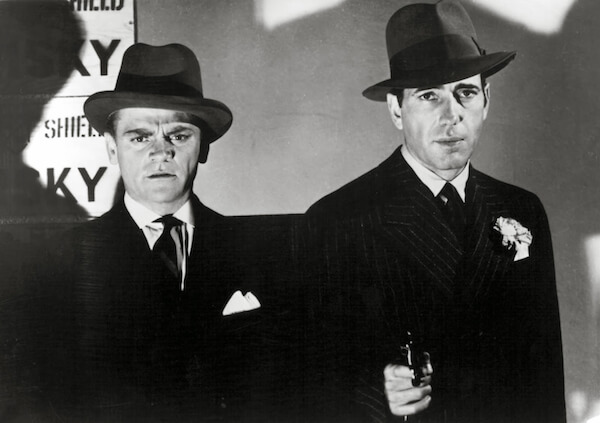There is no better demonstration of ace comic timing on the New York stage now than Annaleigh Ashford playing a dog, in the titular role of A.R. Gurney’s “Sylvia.” It’s the kind of twee whimsy that rises or falls on the casting of this central role and one almost shudders to think what it would be like without her. Added to her arresting presence are the kind of huge-eyed, waifish adorableness Al Hirschfeld would have killed to caricature and a lovely singing voice which gets a brief chance to glow here on Cole Porter’s “Ev’ry Time We Say Goodbye.”
I’ve been a devoted fan of Ashford’s ever since “Kinky Boots.” As a British blue collar working girl, she took a peripheral role and, again using that distinctive, cannily gauged, slightly delayed comic performance rhythm (as original in its way as the technique of Jean Arthur or Judy Holliday), stole the show and was by far the best and freshest thing in it.
Consolidating my adoration of her was her debut act at Feinstein’s/ 54 Below. Cabaret is not as easy as it looks, and I’ve seen talent like Sutton Foster, Megan Hilty, Lena Hall, and Alexander Gemignani be less than brilliant in their attempts at it. But Ashford, clad in an outfit that resembled a glittering silver disco ball, got it down perfectly, slyly paying homage to the club’s infamous past, with the entire performance like the most delicious in-joke, possibly the most purely festive act I had seen since the early, greatest days of Bette Midler live.
In the Noh: Annaleigh Ashford’s perfect canine timing, Menzies’ design, a Glaspell gem
She’s returning to 54 for the New Year’s show (254 W. 54th St.; Dec. 31, 11 p.m.; 54below.com), and I snatched the chance to chat with this very busy, white-hot star on the skies-the-limit ascendant. I asked her what we could look forward to on New Year’s 2016 and she said, “We are giving you a couple of the favorites from the first time around, but exploring some new material. It wouldn’t be a New Year’s show without looking back on the year, so we will be celebrating some of the highlights of 2015!”
Regarding the “Sylvia” revival, Ashford said that producers “Daryl Roth and Jeffrey Richards are great dog lovers and have wanted to produce this play for quite a while. The stars aligned for it to happen this year, and I was lucky enough to be invited to help tell the story. My dog, Gracie, has served as a great inspiration! And, for my costume, [designer] Ann Roth was so brilliant and generous! She made sure that we found a wonderful organic hybrid of pup and person.
“Julie White and Matthew Broderick make me laugh every night. They are both such wonderful, dynamic, organic actors, so it has been such a joy to work with them. It only works if it’s organic.
“You ask about my timing — where it comes from? It comes from a childhood of watching and appreciating comedy that stemmed from vaudeville like 'The Carol Burnett Show' and ‘Saturday Night Live.’”
Ashford took home the Tony for her hilarious performance as Essie, the worst — but most instantly lovable — ballerina in the universe in the delightful Roundabout revival of “You Can’t Take It With You.” She described that award evening as “an overwhelming dream come true. For Essie, like every character I create, I started with the clues from the playwright and shaped her with the director. I was so lucky to work with such a brilliant company of actors who took care of me so beautifully. James Earl Jones is everything you want him to be and more. I want to be him when I grow up. I did see the [1938 Frank Capra] film of the play. I love Ann Miller! And I love what she did with Essie in the film.”
Ashford confided that her dream role is “Sweet Charity,” and the mind fairly reels at what comedy and pathos she could mine there, beyond, of course, nailing the singing and dancing. “Lost in the Stars: Live at 54 Below,” her album of her cabaret act was just released, and you can also catch her on the fourth season of Showtime’s “Masters of Sex.”
The man whom many consider Hollywood’s greatest art director, William Cameron Menzies (1896-1957), is receiving a rare, so-deserved retrospective at Film Forum beginning November 27, coinciding with the publication of the book, “William Cameron Menzies: The Shape of Things to Come,” by James Curtis (209 W. Houston St.; filmforum.org). Menzies came to prominence in the silent era, creating no-expense-spared fantastical worlds for fabled stars like Mary Pickford, Douglas Fairbanks, Rudolph Valentino, Gloria Swanson, and the Talmadge sisters, a highlight being his Maxfield Parrish-influenced designs for “The Thief of Bagdad” (1924). His impressive Technicolor work on “The Adventure of Tom Sawyer” (1938) led producer David O. Selznick to entrust him with the entire look of “Gone with the Wind,” as well as the direction of the burning of Atlanta sequence.
Menzies, with his panoramic vision, brilliant storyboards, and technical ingenuity, truly made the movies big and spectacular in the days before the empty, bland, and synthetic monotony of CGI. One of his trademark scenes was the field of dead and dying soldiers in “Gone with the Wind,” culminating in a tattered Confederate flag, limply waving in the wind. Those bloodied uniformed bodies were a mix of real extras and dummies, some of which had their limbs slyly manipulated like puppets for verisimilitude.
The wonderful Film Forum festival is marked by a number of real rarities that I’ve never seen but am highly anticipating, and here are some of the ones I have seen and can recommend:
“Alice in Wonderland” (1933; Dec. 6): This is a fairly static Carroll adaptation but interesting visually, with an incredible cast assembled from the Paramount ranks, most of them heavily costumed and unrecognizable: Cary Grant as the Mock Turtle (singing “Beautiful Soup”), Gary Cooper as the White Knight, W.C. Fields as Humpty Dumpty, Edna May Oliver as the Red Queen, Edward Everett Horton as the Mad Hatter, Charlie Ruggles as the March Hare, and, as Alice, the pallid Charlotte Henry, in the role the young Bette Davis was desperate to do.
“Things to Come” (1936; Nov. 27): Alexander Korda’s jaw-dropping adaptation of H.G. Wells’ vision of the future, namely 1970, had an incredible cast (Ralph Richardson, Raymond Massey, Cedric Hardwicke, who replaced Ernest Thesiger, hard-faced Margaretta Scott, Ann Todd) dressed in sleek neo-classical-looking garments at bizarre odds with all the gadgetry of space travel.
“Foreign Correspondent” (1940; Dec. 5). What I consider to be Menzies’ masterpiece, Alfred Hitchcock’s stunning international World War II spy thriller has one brilliant Menzies-designed set piece after another: a diplomat’s assassination in the rain, a windmill providing a crucial hideout, a murder attempt atop Westminster Cathedral, and possibly the best airplane crash into the ocean in film history.
“Our Town” (1940; Nov 28): Hollywood wasted no time bringing Thornton Wilder’s revolutionary play to the screen, casting it with some of their most durable character actors as the denizens of Grover’s Corners (Thomas Mitchell, Beulah Bondi, Fay Bainter, Guy Kibbee, Frank Craven, Stu Erwin). Martha Scott was a tad mature by that point as Emily, but, as George, an achingly young William Holden was definitive — a beautiful performance.
“The Devil and Miss Jones” (1941; Dec. 13): This was a more modest production for Menzies, about workers in a department store striving for their rights, framing one of the charmingly squeaky-voiced Jean Arthur’s most winning performances.
“Kings Row” (1941; Nov. 29): Director Sam Wood’s powerful saga of dark psychological doings in a picture perfect American small town features perhaps the only decent performance Ronald Reagan ever gave, with Claude Rains and Charles Coburn both giving doctors a very bad name, a radiant Ann Sheridan, and fascinating Betty Field, expert at the time at playing high-strung neurotics who ended badly.
“For Whom the Bell Tolls” (1943; Nov. 28): This florid adaptation of the book is much more Hollywood than Hemingway, but very entertaining and memorable for its lush Victor Young score, Ray Rennahan’s Technicolor cinematography, Ingrid Bergman at her most luminous, and Katina Paxinou and Akim Tamiroff, a Greek and a Russian, cast as Spanish anti-fascist rebels, chewing every bit of Spanish mountain scenery they can.
“Ivy” (1947; Dec. 2): The usually demure Joan Fontaine turned on the iciness and jumped on the noir-ish “La Belle Dame sans merci” leading lady trend of the 1940s (Gene Tierney in “Leave Her to Heaven,” Merle Oberon in “Temptation,” Hedy Lamarr in “The Strange Woman,” and, of course, Barbara Stanwyck in “Double Indemnity”) as an Edwardian seductress, exquisitely gowned by Orry-Kelly, fond of poisoning those who get in her way, from a book by that English specialist in period murder, Marie Belloc Lowndes.
The worthy Metropolitan Playhouse is staging Susan Glaspell’s 1931 Pulitzer Prize-winning play, “Alison’s House,” and it is an absolute don’t miss (220 E. Fourth St., btwn. Aves. A & B, through Dec. 13; metropolitanplayhouse.org). Besides founding the Provincetown Players with its major discovery of Eugene O’Neill, Glaspell (1876-1948) wrote nine novels and 15 plays, all of which sadly went out of print, contributing to the lack of general knowledge about this early feminist writer who has been referred to as American drama’s best kept secret.
“Alison’s House” is based on the family of poet Emily Dickinson, and what went on after her demise in terms of her estate and literary legacy. Under the febrile direction of Alex Roe, a perfectly assembled cast simply glows with human warmth and complexity, and the character of Alison, although dead and unseen, comes vividly to life through their hushed descriptions and awed reverence. It’s taken far too long for Glaspell to assume her rightful place as a playwright, alongside the overly revived O’Neill, Williams, Miller, and even Mamet. I hope this marvelous production spearheads the way.
On November 29, following the matinee at 3 p.m., I will be moderating a talkback, in which I will touch on the original 1930 Broadway production, which was directed by and starred the great out and proud lesbian doyenne of the stage, Eva Le Gallienne. In that show, the part of Louise was played by her lover, actress Josephine Hutchinson.



































